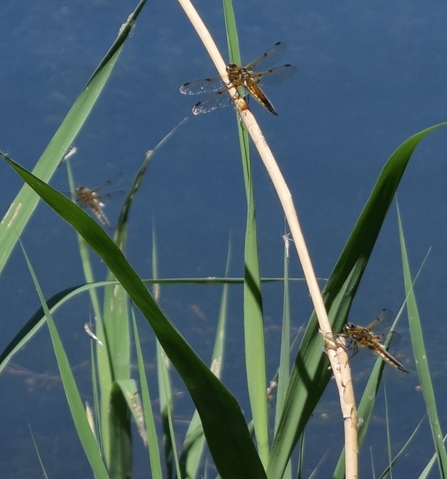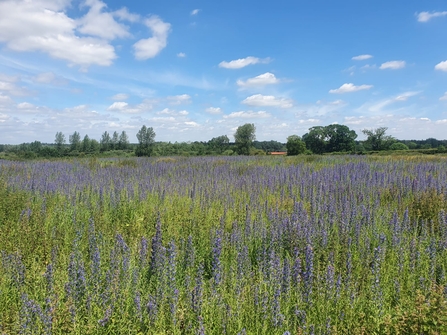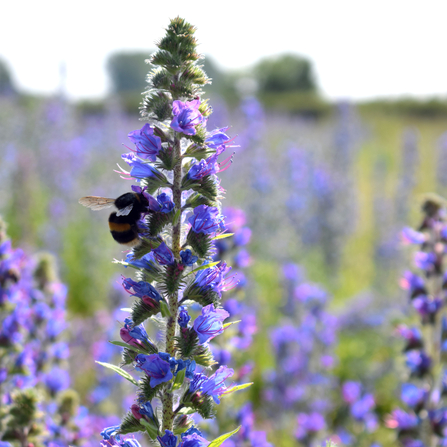The main attraction for me is watching and trying to identify all those dragonflies and damselflies around the reserve. Clouds of damselflies can be found either side of the trails as you walk around. Most of these will be azure damselfly. If you spot a red one, then this would be a large red damselfly. The most common large dragonfly that you see would be the four-spotted chaser – these can often be seen flying around in front of the hides and viewpoints. Another large one is the emperor dragonfly and these are just emerging right now. They patrol small areas of water – try the raised pond as one seems to spend quite a bit of time there. Also look out for banded demoiselle – the male has distinctive black markings on the wings – the metal bridge on the approach to Bess’s hide is best for these.
Dragonflies emerge at Lackford Lakes
dragonfly emerging

four-spotted chaser by Emily Quilton
Four-spotted chaser
Many other insects can now be found and located around the reserve. Our breckland areas around the red trail or down the blue trail towards the viewing platform are good locations for looking for these insects. These areas are also particularly good for butterflies like small copper/small heath and are good for flowering plants like vipers bugloss.
small copper

Viper’s bugloss at Lackford Lakes – Joe Bell-Tye
Bird wise – many of our small birds are now busy raising families around the reserve. Look out for reed warblers darting around in the reeds. Robins and blackbirds are searching for food around the trails. On the lakes look out for shelduck, pochard, tufted duck, grey heron, lapwing etc. In recent weeks we have also had a glossy ibis visit and it seems to have settled on the slough – it can be difficult to see as is often hiding in the vegetation so worth checking this area from all angles (Paul’s and Bernard’s hides). Kingfisher wise – we are not seeing a lot of action at the moment with only a few reports coming in daily. This could be down to the poor weather during spring affecting their breeding attempts. They can have two or three broods so action should pick up soon from around the reserve. Our swifts are currently on two eggs and can be seen on the camera in the centre – they should hatch soon. We have also seen a couple of swifts using another box – this could be a young pair and they are likely to return to nest in this box in future years.
swifts on camera at Lackford Lakes - 18th June 2021
Summer at Lackford Lakes is a great time to visit the reserve and witness the mix of wildlife on the reserve from dragonflies to birds.
Latest opening times
The reserve is currently open from 10am to 5pm daily with the café / shop open from 10am to 4pm. Toilets are available 10am to 5pm. On Friday evenings through the summer, the reserve will be open longer until 8pm and the café / shop will be open until 7pm. This allows a great way to enjoy the reserve after a working week and to kick start the weekend relaxing with an evening on the reserve.
Hides
Four of our hides are currently open on the reserve. Paul’s (blue trail), Bess’s (green trail) and Steggall’s hide (green trail) are open 8am to 5pm (until 8pm on a Friday). Bernard’s hide (blue trail) will be open from 9:30am to 4:30pm.
Every day
You can borrow a pair of binoculars for £3. Children activities currently available is the summer spotter sheet (suggested donation £2) and bug hunting kit (suggested donation £3).

Vipers bugloss by Emily Quilton
dragonfly emerging

